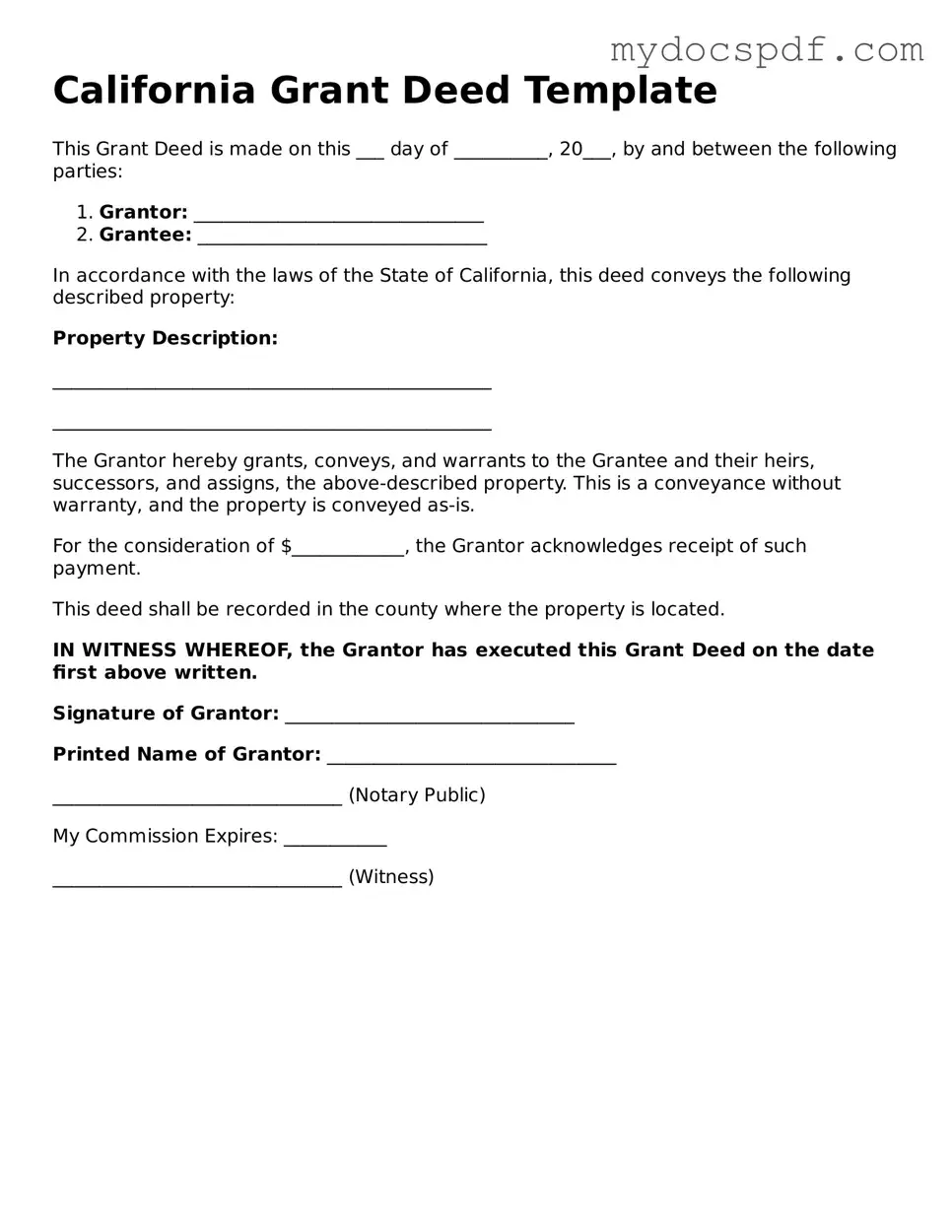California Grant Deed Template
This Grant Deed is made on this ___ day of __________, 20___, by and between the following parties:
- Grantor: _______________________________
- Grantee: _______________________________
In accordance with the laws of the State of California, this deed conveys the following described property:
Property Description:
_______________________________________________
_______________________________________________
The Grantor hereby grants, conveys, and warrants to the Grantee and their heirs, successors, and assigns, the above-described property. This is a conveyance without warranty, and the property is conveyed as-is.
For the consideration of $____________, the Grantor acknowledges receipt of such payment.
This deed shall be recorded in the county where the property is located.
IN WITNESS WHEREOF, the Grantor has executed this Grant Deed on the date first above written.
Signature of Grantor: _______________________________
Printed Name of Grantor: _______________________________
_______________________________ (Notary Public)
My Commission Expires: ___________
_______________________________ (Witness)
